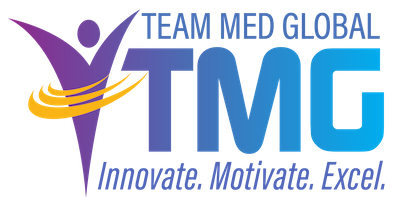 In 2021, an average of 3.95 million workers quit their jobs each month, with resignation rates highest for employees between 30 and 45 years old in the healthcare and tech industries. While there are several reasons workers left in droves, one of the driving factors of “The Great Resignation” has been workplace burnout.
In 2021, an average of 3.95 million workers quit their jobs each month, with resignation rates highest for employees between 30 and 45 years old in the healthcare and tech industries. While there are several reasons workers left in droves, one of the driving factors of “The Great Resignation” has been workplace burnout.
According to the American Psychological Association, 79% of employees surveyed in 2021 experienced workplace stress. That stress manifested in a number of ways, with 36% of respondents describing mental exhaustion, 44% reporting physical fatigue, 26% experiencing a lack of motivation or interest, and 19% reporting not making an effort at work.
Workplace stress leads to workplace burnout, which the World Health Organization redefined in 2019 as a “syndrome conceptualized as resulting from chronic workplace stress that has not been successfully managed.”
Organizational Approaches to Workplace Burnout
When approaching strategies to combat workplace burnout, it’s helpful to divide potential solutions into those undertaken by organizations and those undertaken by individuals.
Organizations have a financial interest in preventing or mitigating employee burnout. An employee who is burned out is less productive, is less inclined to innovate, and has higher absenteeism. This burned-out employee thus places a burden on coworkers who must pick up the slack. Burnout can then become contagious, causing an epidemic of low motivation and resignations. Resignations, in turn, lead to increased costs for recruitment, onboarding, and training.
The first step in an organizational response to burnout is to identify the scope of the problem. The Maslach Burnout Inventory (MBI) is most considered the gold standard of burnout assessment, and can measure emotional exhaustion, depersonalization, personal accomplishment, cynicism, and professional efficacy.
The next step is to examine the underlying causes of burnout. These may include understaffing, poor compensation, time between promotions, and lack of training opportunities. Then, programs can be developed to correct the issues that cause employees to struggle with burnout.
Individual Approaches to Workplace Burnout
When you’re experiencing workplace burnout, it can be difficult to do more than put one foot in front of the other and make it through the workday. Nevertheless, it’s important that you take steps to create a workplace environment in which you can thrive.
Your first step should be to assess why you’re feeling burned out. It may be because your department is understaffed and it’s impossible to fulfill all the responsibilities assigned to you. It could be that you feel stuck, either because there are no opportunities for advancement or because you are bored with your role. It might be that you’re struggling to juggle family and work responsibilities, that it’s been too long since you’ve had a vacation, or that you’re feeling isolated from your coworkers.
Next, evaluate your options and decide on your goal. If your goal is to stay with your current employer, consider taking one or more of these steps:
- Become pivotal in solving a larger burnout problem by working with leadership to assess the workforce and implement programs to prevent and alleviate burnout.
- Meet with your supervisor, name the challenges you’re facing, and explain proposed steps for reducing your level of burnout and rededicating yourself to the organization. The importance of asking for what you need can’t be overstated. If you need reduced hours, a hybrid work environment, additional staffing, a leave of absence, or another type of support, ask for it. Requesting the minimum and hoping your burnout will dissipate is an exercise in wishful thinking.
If your goal is to leave your current employer, consider doing a SWOT (strengths, weaknesses, opportunities, and threats) analysis:
- Assess your strengths. Identify what you do well, what resources you can draw upon, and what others see as your strengths.
- Pinpoint your weaknesses. Everyone has shortcomings. Look for knowledge or skills gaps and find ways to fill them. Think about both “hard” skills and “soft” skills.
- Identify your opportunities. Examine how you can turn your strengths into opportunities, what employers are in your region, and what other types of positions might be a good fit. For example, you might want to take time to plan your next career move and work in an interim position, or you may want to become a specialist, a consultant, or a subject matter expert.
- Determine the threats to your well-being. Perhaps your financial situation is a driving factor in the next step you take. Maybe a move is out of the question because your kids are in a great school. It could be that the medical insurance you have is crucial to maintaining your health.
Once you have done your SWOT analysis, you’ll have a clear idea of the paths available to you. It’s hard to feel motivated to make a career change when you’re experiencing burnout, but keep your eye on the goal of being able to both work and maintain your well-being.
Burnout is real. We live in an era where everyone is trying to do more with less, and that can take a toll. Know that employers understand the impact that The Great Resignation is having, and are more open than ever before to finding solutions to burnout. And keep in mind that there are a multitude of career opportunities open to you. You don’t have to sacrifice your well-being for your career.
Need career direction? TMG University provides one-on-one career coaching for those in healthcare administration. Contact maggie (at) teammedglobal (dot) com to connect with a right-fit coach that can help you alleviate burnout and determine next steps.
